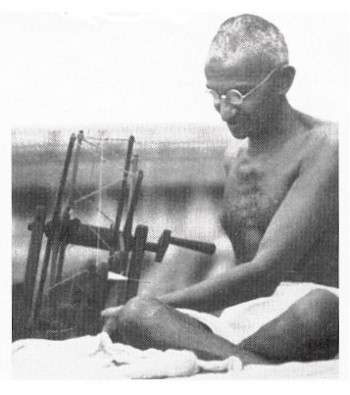by Kathy Kelly
September 13, 2010
In the early 1970’s, I spent two summers slinging pork loins in a Chicago meat-packing factory. Rose Packing Company paid a handful of college students $2.25 an hour to process pork. Donning combat boots, yellow rubber aprons, goggles, hairnets and floor length white smocks that didn’t stay white very long, we’d arrive on the factory floor. Surrounded by deafening machinery, we’d step over small pools of blood and waste, adjusting ourselves to the rancid odors, as we headed to our posts. I’d step onto a milk crate in front of a huge bin full of thawing pork loins. Then, swinging a big, steel T-hook, I’d stab a large pork loin, pull it out of the pile, and plop it on a conveyor belt carrying meat into the pickle juice machine. Sometimes a roar from a foreman would indicate a switch to processing Canadian pork butts, which involved swiftly shoving metal chips behind rectangular cuts of meat. On occasion, I’d be assigned to a machine that squirted meat waste meat into a plastic tubing, part of the process for making hot dogs. I soon became a vegetarian.
But, up until some months ago, if anyone had ever said to me, “Kathy Kelly, you slaughtered animals,” I’m sure I would have denied it, and maybe even felt a bit indignant. Recently, I realized that in fact I did participate in animal slaughter. It’s similar, isn’t it, to widely held perceptions here in the United States about our responsibility for killing people in Afghanistan, in Pakistan, in Iraq and other areas where the U.S. routinely kills civilians.
The actual killing seems distant, almost unnoticeable, and we grow so accustomed to our remote roles that we hardly notice the rising antagonism caused by U.S. aerial attacks, using remotely piloted drones. The drones fire missiles and drop bombs that incinerate people in the targeted area, many of them civilians whose only “crime” is to be living with their family.
Villagers in Afghanistan and Pakistan have little voice in the court of U.S. public opinion and no voice whatsoever in U.S. courts of law. Aiming to raise concern over U.S. usage of drones for targeted killings, 14 of us have been preparing for a trial here in Las Vegas, where we are charged under Nevada state law with having trespassed at Creech Air Force Base, in nearby Indian Springs, Nevada.
The charges stem from an April, 2009 action when several dozen people held vigils at the main gate to Creech AFB for ten days. One of our banners said, “Ground the Drones, Lest Ye Reap the Whirlwind.” Franciscan priest Jerry Zawada’s sign said: “The drones don’t hear the groans of the people on the ground, –and neither do we.” Jerry carried that sign onto the base on April 9, 2009 when 14 of us attempted to deliver several letters to the base commander, Colonel Chambliss. Nevada state authorities charged us with trespass. We believed that international law, which clearly prohibits targeted assassinations, obliged us to prevent drone strikes. “It is incumbent on pilots, whether remote or not, to ensure that a commander’s assessment of the legality of a proposed strike is borne out by visual confirmation,” writes Philip Alston, the UN Special Rapporteur on extrajudicial, summary or arbitrary executions, “and that the target is in fact lawful, and that the requirements of necessity, proportionality, and discrimination are met.”
The United States isn’t at war with Pakistan. U.S. leaders repeatedly stress that Pakistan is our ally. Nevertheless, U.S. operated drones are used for targeted killing in North and South Waziristan. “Targeted killing is the most coercive tactic employed in the war on terrorism,” according to the Harvard Journal. “Unlike detention or interrogation, it is not designed to capture the terrorist, monitor his or her actions, or extract information; simply put, it is designed to eliminate the terrorist.” http://www.harvardnsj.com/2010/06/law-and-policy-of-targeted-killing
The Pentagon claims that the drone attacks are an ideal strategy for eliminating Al Qaeda members. Yet in the name of bolstering security for U.S. people, the U.S. is institutionalizing assassination as a valid policy. Does this make us safer?
General Petraeus may perceive short-term gains, but in the long run it’s likely that the drone attacks, as well as the night raids and death squad tactics, will cause blowback. What’s more, drone proliferation among many countries will lessen security for people in the U.S. and throughout the world.
With the usage of drones, the U.S. populace can experience even greater distance and less accountability because U.S. armed forces and CIA agents, invisible to the U.S. populace, can assassinate targets without ever leaving a U.S. base. Corporations that manufacture the drones and technicians who design them celebrate cutting edge technology and rising profits.
In a Las Vegas courtroom, on September 14, 2010, the judge who hears our case has an unusual opportunity to help accelerate that process by allowing expert witnesses to speak about citizen obligations under international law and our protected rights under the constitution of the U.S., all in relation to our duty to abolish drone warfare.
Recalling my own involvement in slaughter, I’m ashamed that I took the job for no other reason than to earn a few dimes more, per hour, than I might have gotten at a job which didn’t involve killing. It took me four decades to realistically assess what I’d done. Will it take 40 years for us humans to acknowledge our role in slaughtering other human beings who have meant us no harm.
Kathy Kelly (kathy@vcnv.org) co-coordinates Voices for Creative Nonviolence www.vcnv.org
——
Dear Metta readers: Please also read read Kathy’s recent article on Common Dreams, and Bill Quigley’s related Drone Memo to Allow Defenses Con Necc and Intl Law.











